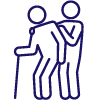- Yokohama-shi Top Page
- Kanazawa Ward Top Page
- Introduction of the ward
- History of Kanazawa Ward
- Yokohama Kanazawa, where history lives
- Kanazawa unraveled from assets
- Temples and temples in Kanazawa seen from the Edo Famous Places
Here's the text.
Temples and temples in Kanazawa seen from the Edo Famous Places
Last Updated May 2, 2022
The Edo Famous Zoukai is a geography that describes the scenery of Edo and its suburbs and the lifestyles of people in the late Edo period. There are 60 illustrations in the Yokohama area and 17 illustrations in the Kanazawa area. From this, I compare some of the things related to Kanazawa with the current appearance.
※Edo Famous Places in Kanagawa Prefectural Kanazawabunko
Seto Shrine
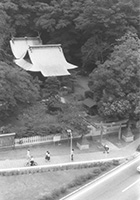
At the center of Hiragata Bay, which was a key point of maritime traffic, the entrance to Seto Inland Sea was a difficult place for rapids swirling at low tide. It was the origin of Seto Shrine that worshiped the sea god here. When Yoritomo Minamoto transferred the spirit of Izu Mishima Myojin to this area, the shrine developed. Important works in the art history of the Kamakura period are still preserved, such as a number of god statues and the "Dairaku masks two sides" used by Sanetomo Minamotono and said to have been dedicated by Masako Hojo.
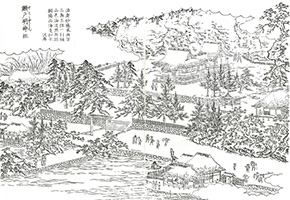
Akira Seto Shrine
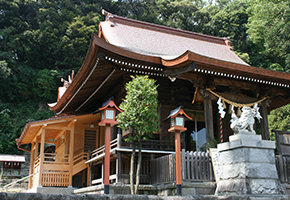
Seto Benzaiten (Biwajima Shrine)
In 1180 (1180), when Yoritomo Minamoto requested Seto Shrine from Izu Mishima Myojin, his wife, Masako Hojo, recommended Chikubushima Benzaiten, and has long been called Biwajima Benzaiten.
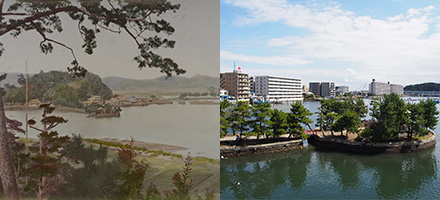
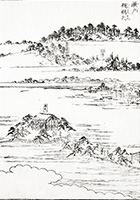
Seto "From Kurantei to Setobashi" Nagao Kusuyama Collection
(Kanagawa Prefectural Kanazawabunko)
Seto Benzaiten
Kinryuin Temple
Along with Nomi-do, Kurantei, located on the grounds of Kinryu-in, was famous as a view of the eight views of Kanazawa.
Located in the center of Kanazawa Hakkei, I was able to enjoy the scenery of Kanazawa Hakkei, which is different from Nomi-do.
Unlike those seen from Uchikawa Kureyuki's Uchikawa "Uchikawa" from Nomi-do, it is thought that the fact that the beach of Segasaki to Hiragata Bay near Kurantei was considered to be in consideration of the good view.
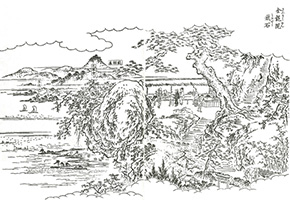
Kinryuin Tobiishi
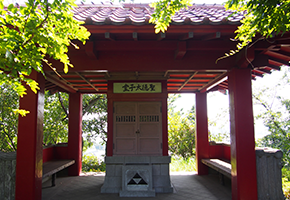
Kinryuin Kurantei
Kamigyoji Temple
It was thought to have been founded at the beginning of the Kamakura period, and was originally called Kinshoji of the Shingon sect. It is said that in 1254 (1254), Nichiren arrived at Rokuura Beach and was converted to Nichiren sect and became Kamigyoji.
On the precincts, there are 600-year-old kaya trees planted by Nijojin, graves of Nijojin, and pine trees next to ships.
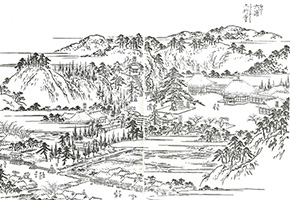
Rokuura Kamigyoji Temple
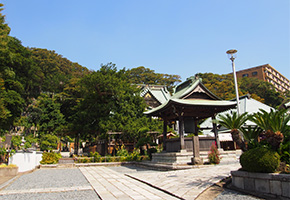
Kamigyoji Temple and Kaya Tree
Kodenji Temple
Rokuemon Nagano, a resident of Rokuura, brought back the neck of Amida Nyorai, who was accidentally cut off while traveling, and built a soan to celebrate it. We received a Buddha statue only in the fuselage in Nikaido in Kamakura with the announcement of our dream, and attached the neck to make it a united principal. Namiki Tenman-gu Shrine, located in Urayama, was a place to relax for those who once visited Rokuura from Kamakura with a wonderful view.
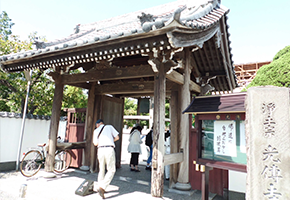
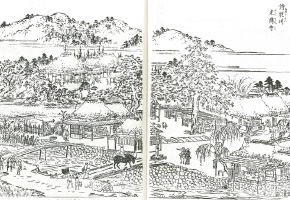
Samuraigawa Kodenji Temple
Noshana-sho Jizo
In the past, just 2m east of this Jizo was the border between Musashi and Sagami.
It was a key point on the highway connecting Kanazawa and Kamakura, and was worshiped at some time, but now it is difficult to determine its appearance.
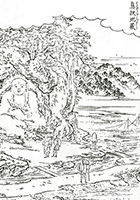
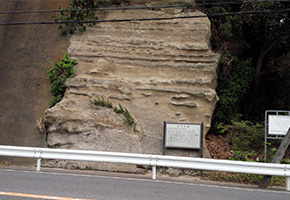
Noseless Jizo
Restaurant arbor (remains)
It is a tea shop that opened around 200 years ago near Setobashi. In 1858 (1858), the arbor burned down the Seto Fire and moved to Higashizume in Setobashi. It is famous that Hirobumi Ito and others have been discussing the draft of the Meiji Constitution since the beginning of the Meiji era.
Seto Bridge
The strait between Seto and Suzaki was a narrow strait, and it was difficult to cross easily. It was in 1305 that Hojo built Seto Bridge to eliminate this inconvenience. At that time, Seto Bridge built an island in the middle of the strait and crossed two bridges from both sides to it. It is also the center of Seto Akizuki, one of the eight scenic spots.

Setobashi restaurant
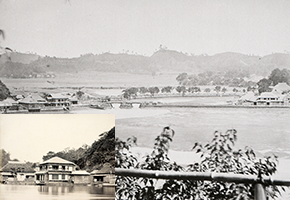
Far view of Hiragata Bay (collected by Yokohama Archives of History)
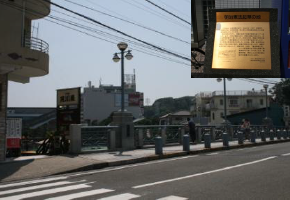
The ruins of the current Seto Bridge and the restaurant arbor
Ryukaji Temple
In 1189 (1189), the origin of Ryuge-ji Temple was founded by Yoritomo Minamoto, who enshrined the Maitreya Bodhisattva in the mountains of Rokuura as a literary superior.
After that, it was devastated by the war of the Middle Ages, but in 1499 (1499), the two temples, Mitsunori-ji and Jogan-ji, were annexed and rebuilt as Ryuge-ji.
In the precincts, there is the tomb of the Nagashima Mudgame clan, the pioneer of mud turtle Nitta. The Nagashima family became the Danya of Ryuka-ji Temple, and in 1826 (1826), Ryuka-ji Temple was destroyed by the entire mountain, and was working hard to rebuild it.
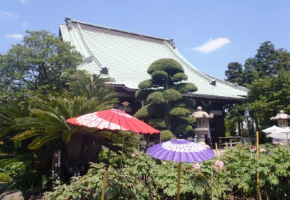
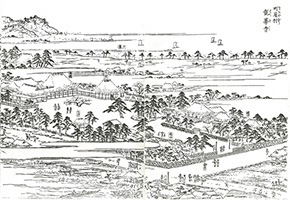
Machiya Village Ryukaji Temple
Akitoki Kanesawa and Sadaaki Tomb
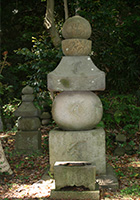
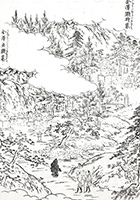
The tombs of Akitoki Hojo and Sadaaki are surrounded by quiet trees at the foot of the mountain, which is the entrance to Hachikakudo on the summit from the back of Kanazawabunko, on the precincts of Shomeiji Temple. It is the same place as the position depicted on the old map (important cultural property) of 1323 (1323).
Nomi-do
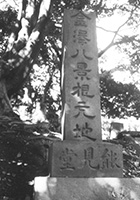
There is the ruins of Nomi-do, just 500 meters above Kanazawa Road. It became famous because there was an observatory where you could see the eight views of Kanazawa, and before the war, there was a huge pine called `` brush cut pine '' along with the legend that Kanaoka Koseno abandoned the brush, but it was cut down during the war Was.
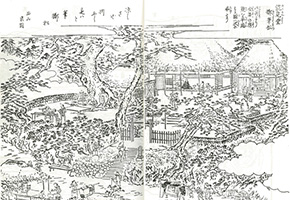
Nomido throwing pine
Inquiries to this page
Kanazawa Ward General Affairs Department Regional Promotion Division
Telephone: 045-788-7804
Telephone: 045-788-7804
Fax: 045-788-1937
Email address: kz-chishin@city.yokohama.jp
Page ID: 679-161-678








